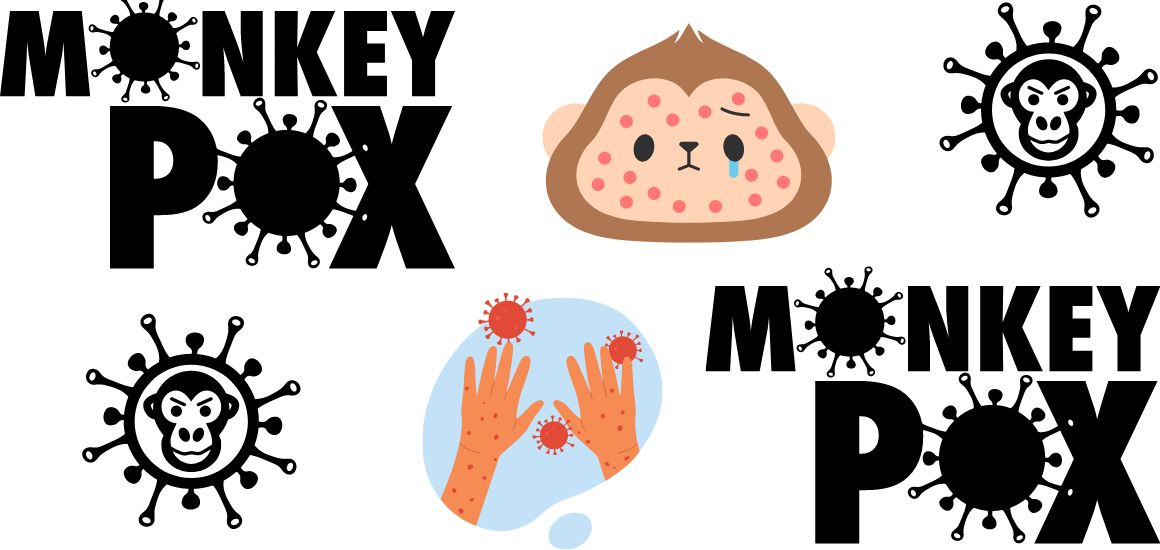Both Animals & Humans Are In Danger Due To Monkeypox Virus (MPXV)!

The world focuses on the latest disease situation emerging in several European countries. With the rapid spread of this disease to about 75 countries and the number of confirmed cases of more than 16,000 with five confirmed deaths, the World Health Organization declared the monkeypox virus an Emergence in Public Health of Global Concern.
What is monkeypox/monkey virus?
What is monkeypox disease?
The monkeypox virus is a rare disease known as monkeypox. The monkey virus often affects nonhuman primates like monkeys or rodents like rats or mice. However, it can also affect people. Creating human monkeypox. Typically, monkeypox affects Central and West Africa. Cases outside of Africa typically result from traveling abroad. Moreover, importing animals or having close contact with an animal or someone else with the disease are the other reasons.
History of the deadly disease
Scientists first identified monkeypox in 1958 in research monkeys, and the disease was appropriately named. The first evidence that the disease was transmitted from monkeys to humans was discovered in the Democratic Republic of the Congo region way back in 1970.
After that, the Monkey virus remained a limited disease among people living in forests in the West and Central African region. Later, countries like the United States, Israel, and the United Kingdom were affected by the disease. The reasons behind the spreading to those countries via human migration and imported animals. However, there was no significant effect.
Monkeypox outbreak 2003
In 2003, there were 47 confirmed and likely cases of monkeypox in the following six states: Illinois, Indiana, Kansas, Missouri, Ohio, and Wisconsin. In this outbreak of monkeypox, everybody who had contact with prairie dogs kept as pets contracted the disease.
After being kept with imported small mammals from Ghana, the pets contracted the disease. Case monkeypox in humans outside of Africa was first noted in this instance. Authorities found that a cargo of animals from Ghana transported to Texas in April 2003 brought the monkeypox virus into the country.
Monkeypox outbreak in 2022
Centers for Disease Control and Prevention (CDC) keeps track of instances that have been documented in nations like the United States, where monkeypox is uncommon. Regarding monkeypox CDC is keeping track of several cases of monkeypox in countries all around the world, including Europe and the United States, during the 2022 monkeypox outbreak.
Since the beginning of May 2022, cases of monkeypox have been recorded in non-endemic countries, and they have continued to do so in a number of endemic countries. Most confirmed patients with travel histories cited trips to Europe and North America, in contrast to West or Central Africa, where the monkeypox virus is common. For the first time, many monkeypox cases and clusters have been documented concurrently in endemic and non-endemic countries across numerous geographical regions.
What are the monkeypox virus symptoms?
Fever, headache, swelling, muscle aches, pain in the back of the body, and lethargy are the initial monkeypox virus symptoms.
- After the fever subsides, blisters or blisters appear on the skin. This frequently begins on the face before spreading to other body parts.
- After the rashes develop, they may develop a strong need to scratch, which can lead to injury. After passing through several stages, these rashes dry up and remain on the skin in the form of scales, which fall off, leaving scars on the skin.
The patient must endure all these inconveniences for fourteen and twenty-one days. After that, the condition will disappear on its own.
How is monkeypox virus transmitted?
- The main method of monkeypox transmission is intimate contact.
- In other words, it is believed that there is a high risk of infection if an infected person’s dead skin cells enter organs like the respiratory system, eyes, nose, or mouth that have openings to the inside of the body.
- Clothes, bedding, blankets, or other items that have come into contact with an infected person’s rashes or bodily fluids.
- A fetus can catch the monkeypox virus from a pregnant person who is infected.
ACAM2000 and Jynneos vaccinations, two smallpox vaccines, can protect against monkeypox. Because the viruses that cause smallpox and monkeypox are similar, these vaccines can be used to prevent monkeypox.
Healthcare providers suggest the vaccination for those exposed to monkeypox. For example, Lab workers, who run the risk of contracting the virus at work, may also receive the vaccination. Currently, the CDC monkeypox vaccination does not advocate that everyone receives it.
Are there treatments for the monkeypox virus?
As of now, there is no specific monkeypox treatment. Individuals can control the spread of the disease through practices that reduce the likelihood of infection. Most monkeypox treatments try to reduce symptoms in patients. Pain control and adequate hydration are two possible aspects of care. Increasing the water intake is the best way to keep yourself hydrated.
Some antiviral medications used to treat smallpox, like tecovirimat (TPOXX) and brincidofovir (Tembexa), can also be used to treat monkeypox. Vaccinia immune globulin, which contains antibodies from persons who have received the smallpox vaccine, may be administered to patients who are unlikely to respond to the vaccine.
Conclusion
In the past, monkeypox transmission occurred from person to person very slowly. According to the latest situation, the spread of the disease is quite serious considering the number of infected people reported and the geographical area where they were found.
Remember that the monkeypox virus is difficult to transfer between people without intimate contact, and the monkey virus may be rare where you live. However, speak with your doctor if you notice a fresh rash or other monkeypox symptoms. If you have monkeypox while your rash and scabs are healing, isolate yourself home from family members and pets.